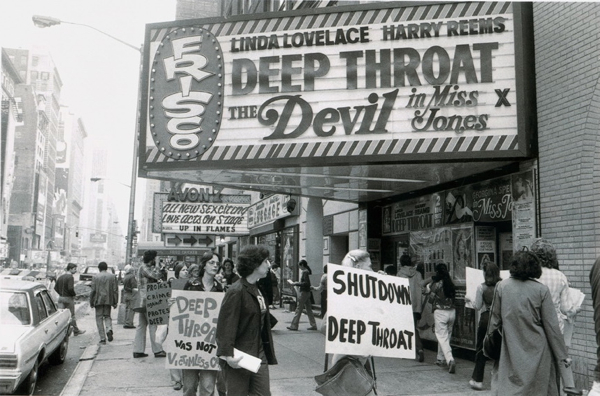Movie review by Greg Carlson
Arguably the most notorious porno film in the history of American movie exhibition, “Deep Throat” serves as the subject of Fenton Bailey and Randy Barbato’s latest razzle-dazzle documentary. Often touted as the most profitable movie ever made (a claim that on some level remains unverifiable, as many of the box office receipts were swallowed up – pun intended – by shady mob operators who shook down theater owners for a chunk of every night’s take), “Deep Throat” emerged at a time in which strange cultural forces seem to have aligned: middle America not only acknowledged the movie’s existence, people of all kinds of backgrounds and income levels clamored to see it.
Directed by ex-hairdresser Gerard Damiano, now a Florida-dwelling retiree, “Deep Throat” presented a ridiculous scenario in which a woman whose clitoris exists at the back of her throat finds fulfillment only through performing fellatio. While the male-centric flaw in this conceit is immediately identifiable as a misogynistic fantasy, the notion that a woman’s sense of pleasure even registers as something of importance ended up being a crucial factor in the reception of the movie – especially when it became the target of investigations by the federal government.
Bailey and Barbato rocket through dozens of incredible stock footage shots that give “Inside Deep Throat” a tremendous feel for the era, but the interviews they conduct with the central players in the “Deep Throat” saga are just as entertaining. Along with an oddball gallery of peripheral participants in the movie’s production, director Damiano and actor Harry Reems contribute fascinating anecdotes. “Deep Throat” star Linda Lovelace, who died from injuries sustained in a car accident in 2002, appears in numerous clips that trace her unsettling personal saga from her violent relationship with uber-creepy husband Chuck Traynor to her status as pop culture icon to her role as a symbol of the anti-porn crusade to her untimely death. Lovelace’s ghost haunts “Inside Deep Throat” to the same extent that Reems mind-boggling odyssey provides the film with its most literal depiction of the cycle of sin, punishment, and redemption.
In a series of Kafkaesque decisions that culminated in Reems’ unfathomable conviction, “Inside Deep Throat” recounts the actor’s unlikely trajectory from bit player to cause celebre. In one segment, we see Reems flanked by Jack Nicholson and Warren Beatty, two of many celebrities who came to the beleaguered actor’s defense. Yet another clip shows Reems on television debating Roy Cohn, with Cohn shouting down Reems with fire and brimstone pronouncements about the workings of the Bill of Rights. American second and third acts are nothing if not strange: Reems is now a recovered substance abuser who sells real estate in Utah.
Many pundits have suggested that it was the government’s intense scrutiny of “Deep Throat” that generated undeserved interest in the movie, and Damiano cheerfully admits on camera that his most famous film is terrible. “Deep Throat” seemed to reach out across the 70s and beyond, and Bailey and Barbato do their best to figure out why the film transcended its status as public enemy number one during the Nixon years (that Nixon was brought down by an anonymous source called Deep Throat is a delicious irony not lost on the moviemakers). An impressive group of talking heads pops up throughout “Inside Deep Throat,” including John Waters, Camille Paglia, Norman Mailer, Gore Vidal, Hugh Hefner, Erica Jong, and Dick Cavett. No matter how witty and pithy, their recollections never fully account for the popularity of “Deep Throat,” which is undoubtedly part of the notorious movie’s mystique.
